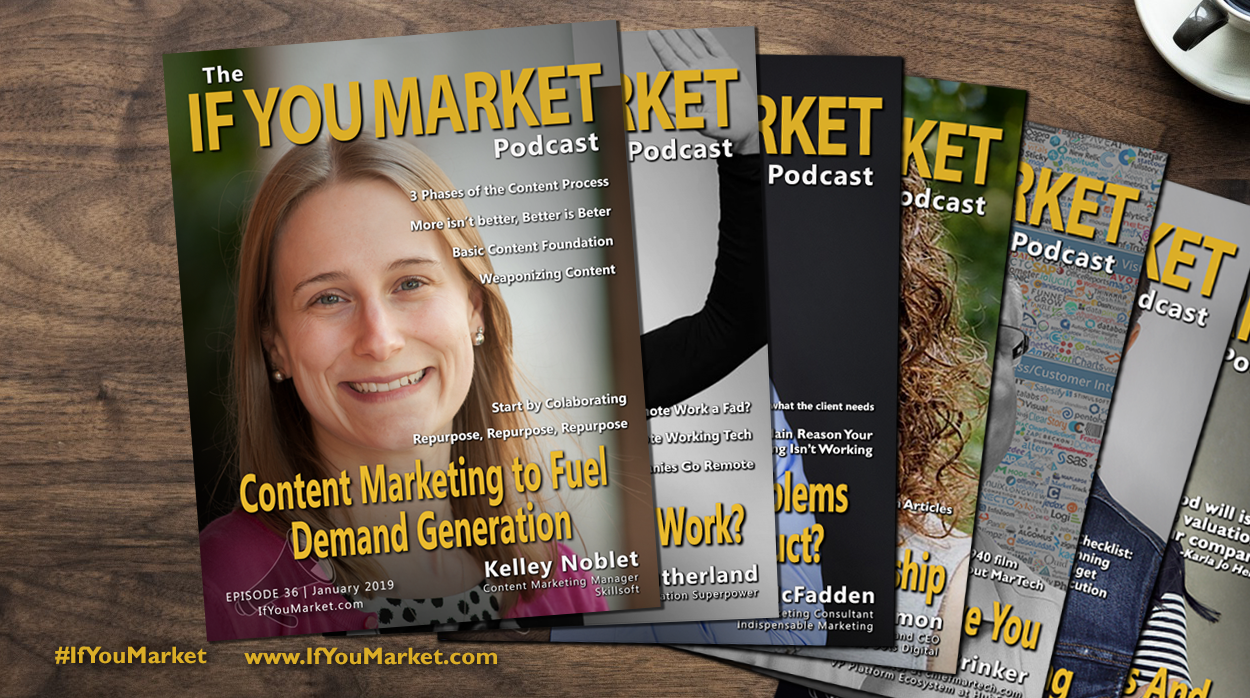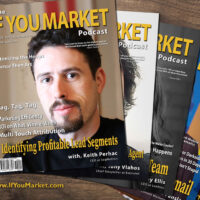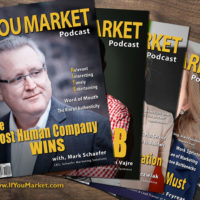
This week on the If You Market podcast we speak with Kelley Noblet of Skillsoft about Content Marketing and how to make sure it is fueling demand generation. Kelley goes over the process from content concept generation, through creation, and all the way to distribution.
Kelley Noblet is responsible for the strategy and execution of content marketing for Skillsoft in the North American region. Prior to her role in content marketing, Kelley spent over 10 years managing demand generation programs. Her background in demand generation gave Kelley an understanding of the complex content needs for potential buyers, customers and sales professionals. Kelley holds a bachelor’s degree in English and Spanish from the University of Connecticut, and a master’s degree in Integrated Marketing Communication from Emerson College. Kelley lives in southern NH with her husband and two daughters.
Subscribe to the If You Market Podcast on iTunes: www.goo.gl/nfMMtW
Youtube: https://youtu.be/b9bEBKOA8GA
Contact Kelley Noblet
LinkedIn: https://www.linkedin.com/in/kelleynoblet/
If you have questions about the If You Market podcast or would like to suggest a guest, please email us at info@IfYouMarket.com.
You can subscribe to The If You Market Podcast on apple iTunes or where ever you get your podcasts.
Transcript:




